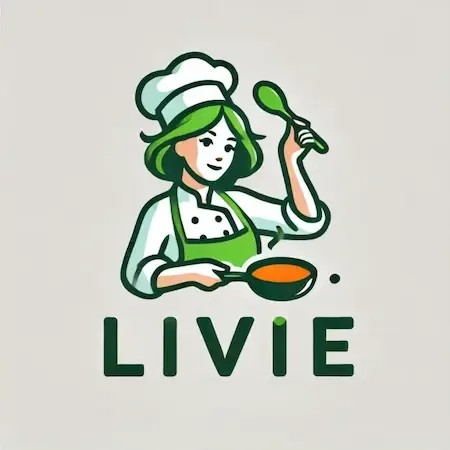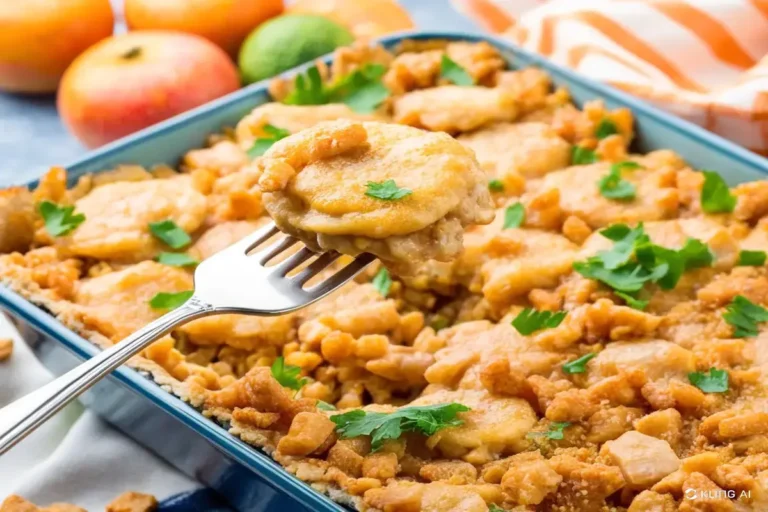The Ultimate Squash Casserole Recipe
Squash Casserole is a quintessential Southern comfort dish that blends the mild sweetness of yellow squash with a creamy, cheesy filling. It’s a popular choice for family gatherings, holiday dinners, and potlucks due to its simplicity and satisfying flavor. Whether served as a side dish or a vegetarian main course, squash casserole is a versatile dish that can elevate any meal.
The key to creating a perfect squash casserole lies in the quality of your ingredients. The combination of yellow squash and savory cheese forms the foundation of the dish, offering a balance of sweetness and richness. If you’re interested in the nutritional benefits of squash, it’s worth noting that it’s packed with essential vitamins and minerals. To delve deeper into the health benefits of squash, consider exploring this guide.
Selecting the right type of cheese is also crucial for achieving the desired creamy texture. While Cheddar is commonly used, adding Parmesan or Swiss can enhance the depth of flavor. If you’re curious about how different types of squash can influence the dish, you might find this article on different types of squash particularly helpful.
Essential Ingredients for Squash Casserole
To create the best Squash Casserole, you’ll need the following ingredients:
- Yellow Squash: The primary ingredient, known for its mild, slightly sweet flavor. Ensure you slice it evenly for consistent cooking.
- Onion: Adds a savory depth that balances the sweetness of the squash.
- Cheese: A mix of Cheddar, Swiss, and Parmesan provides a rich, creamy texture.
- Crackers: Ritz crackers are traditionally used for the topping, adding a buttery, crunchy contrast.
- Eggs and Milk: These bind the ingredients together, creating a smooth and cohesive casserole.
- Butter: Enhances richness and helps brown the topping for a golden finish.
Optional Add-ins
- Jalapeños: Diced jalapeños for a spicy kick.
- Bacon: Cooked, crumbled bacon for a savory, smoky flavor.
- Mushrooms: Sautéed mushrooms bring an earthy taste and additional texture.
For those looking to add more nutrition or a twist to their meals, you might also be interested in our guide on Delicious and Healthy Cottage Cheese Recipes, which offers various creative ways to incorporate cottage cheese into your diet.
Step-by-Step Recipe Instructions
1. Preparing the Ingredients
Begin by preheating your oven to 350°F (175°C). Grease a 2-quart casserole dish with butter or non-stick spray. Gather all your ingredients, ensuring they’re measured and ready to go. Proper preparation is key to a smooth cooking process.
2. Cooking the Squash and Onion
In a large skillet, melt 3 tablespoons of butter over medium-high heat. Add the sliced yellow squash and chopped onion, seasoning with salt and pepper. Sauté the vegetables until the squash is tender, about 10 minutes. Transfer the mixture to a colander to drain any excess liquid, which prevents the casserole from becoming watery.
3. Making the Casserole Filling
In a large mixing bowl, whisk together the eggs, sour cream, Cheddar cheese, Swiss cheese, and milk. Season with salt, pepper, and a pinch of thyme if desired. Gently fold in the drained squash and onion mixture, ensuring everything is well combined.
4. Assembling the Casserole
Spoon the squash mixture into the prepared casserole dish. In a separate bowl, mix the crushed Ritz crackers with melted butter and Parmesan cheese. Sprinkle this mixture evenly over the top of the casserole.
5. Baking the Casserole
Bake the casserole uncovered in the preheated oven for about 30 minutes, or until the top is golden brown and the casserole is bubbling around the edges. Allow the casserole to cool for a few minutes before serving, which helps the dish set and makes it easier to slice.
Tips for the Best Squash Casserole
Achieving the perfect Squash Casserole requires attention to detail and a few essential tips:
- Drain the Squash Thoroughly: Properly draining the sautéed squash and onions is crucial to avoiding a watery casserole. Let the vegetables sit in a colander for several minutes to remove excess moisture.
- Use Fresh Cheese: Freshly grated cheese melts more smoothly and provides a better flavor than pre-shredded cheese, which often contains anti-caking agents.
- Don’t Overcook the Squash: Sauté the squash just until tender. Overcooking can result in a mushy texture that detracts from the dish.
For additional tips on creating the perfect casserole, including advice on ingredient selection and baking techniques, you might find this guide on how to make the perfect casserole useful.
Squash Casserole Variations
Squash Casserole is a versatile dish that can be adapted to suit different tastes and dietary needs. Here are some popular variations:
1. Cheesy Squash Casserole
- Add extra cheese, such as Gruyere or Monterey Jack, for a richer, creamier casserole.
2. Spicy Squash Casserole
- Incorporate diced jalapeños or a dash of cayenne pepper into the filling for a spicy twist.
3. Meat Lover’s Squash Casserole
- Mix in cooked, crumbled bacon, sausage, or ham to create a heartier dish.
4. Vegetarian Squash Casserole
- Stick with the classic recipe or add extra vegetables like bell peppers, mushrooms, or zucchini for a more nutritious version.
5. Gluten-Free Squash Casserole
- Use gluten-free crackers for the topping and ensure that all other ingredients are gluten-free.
For more creative and healthy recipe ideas, explore our article on High-Protein Toasted Cottage Cheese Recipes, which offers nutritious twists on traditional dishes.
Serving Suggestions
Squash Casserole pairs beautifully with a variety of main courses and other sides. Here are some serving suggestions:
- Main Dish Pairings: Serve alongside grilled or roasted meats like Pan Seared Pork Chops, roasted chicken, or baked ham. The richness of the casserole complements these savory mains perfectly.
- Side Dish Ideas: Complement the casserole with green beans, a crisp salad, or roasted vegetables for a balanced meal.
- Garnishing Tips: Add fresh herbs like parsley or chives, or a dollop of sour cream for added flavor and visual appeal.
Storage and Reheating Tips
Squash Casserole is perfect for making ahead and storing. Here’s how to store and reheat your casserole to maintain its flavor and texture:
Refrigeration
Store any leftovers in an airtight container in the refrigerator for up to 4 days. Proper storage helps maintain the freshness and moisture of the casserole.
Freezing
Squash Casserole can be frozen for up to 3 months. Wrap the casserole tightly in plastic wrap, then cover with aluminum foil. Thaw in the refrigerator overnight before reheating.
Reheating Instructions
Reheat leftovers in the oven at 350°F (175°C) for about 15-20 minutes, or until heated through. Add a splash of milk or a small amount of butter if the casserole seems dry.
Nutritional Information
Squash Casserole is rich and satisfying, but it’s also important to consider its nutritional content. Here’s a general breakdown:
- Calories: Approximately 350-400 calories per serving.
- Fat: 22g, primarily from the cheese and butter.
- Carbohydrates: 20g, mainly from the crackers and squash.
- Protein: 8g, from the cheese and eggs.
Healthy Adjustments
- Substitute reduced-fat sour cream or Greek yogurt to lower the fat content.
- Replace some of the butter with olive oil for a healthier fat source.
- Add extra vegetables to increase fiber and nutrients while reducing the calorie density.
Dietary Considerations
- Gluten-Free: Use gluten-free crackers and ensure all other ingredients are gluten-free.
- Dairy-Free: Substitute dairy-free cheese and butter alternatives to accommodate those with dairy sensitivities.
For more ideas on making healthy yet indulgent recipes, check out our Delicious and Healthy Cottage Cheese Recipes, which offer alternatives and tips similar to those you can apply to squash casserole.
Frequently Asked Questions
Can I use other types of squash?
Yes, while yellow squash is traditional, you can also use zucchini or a mix of different squashes for varying flavors and textures.
How do I keep squash casserole from getting watery?
Properly draining the sautéed squash and onions is essential. Allow them to sit in a colander to remove excess moisture.
Do I bake my casserole covered or uncovered?
Bake the casserole uncovered to allow the top to brown and crisp. If the top begins to brown too quickly, cover it with foil for the last 10 minutes of baking.
Can I make squash casserole ahead of time?
Yes, prepare the casserole up to a day in advance. Store it in the refrigerator and bake it just before serving.
How long does squash casserole last in the fridge?
It will last up to 4 days in an airtight container in the refrigerator.
Is it possible to make a vegan squash casserole?
Yes, you can make a vegan version by using plant-based butter, dairy-free cheese, and egg substitutes. Ensure all other ingredients, like the crackers, are also vegan-friendly.
Conclusion
Squash Casserole is a versatile, delicious, and comforting dish perfect for any occasion. Whether served as a side at a family dinner, brought to a potluck, or enjoyed as a main course, this dish is sure to be a hit. The combination of rich, buttery flavor and creamy texture makes it a crowd-pleaser that’s easy to prepare and customize.
With this guide, you’ll be able to create the perfect Squash Casserole that suits your tastes and dietary needs. Whether you stick to the classic recipe or try one of the variations, you’re sure to enjoy this comforting dish.
For more delicious recipes and cooking tips, explore our other articles, such as Dutch Oven Pot Roast Preparation and Ultimate Hamburger Soup Guide. These guides offer further insights into making comforting and nutritious meals that are perfect for any time of year.

